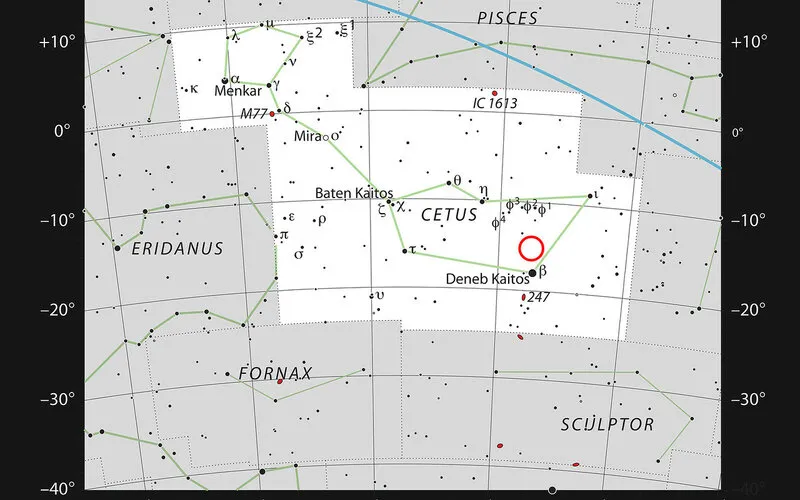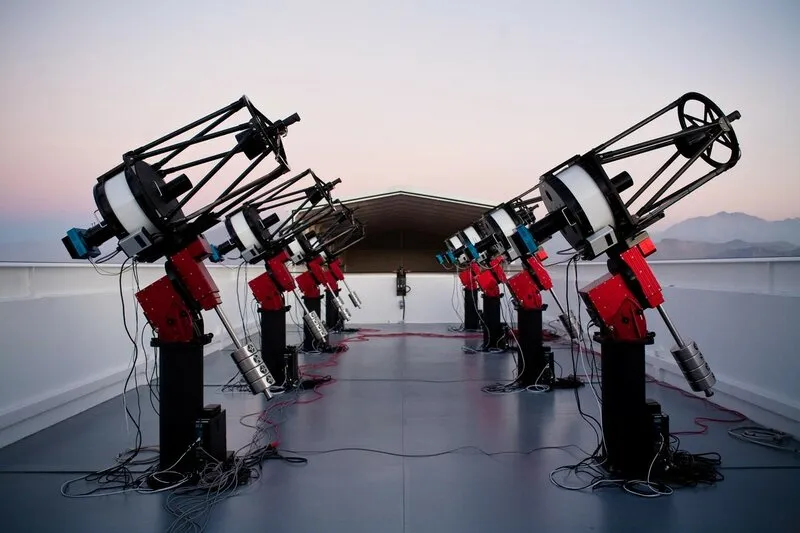Exoplanets, orbiting red dwarfs, are the main newsmakers in astronomy today. The reason is simple: their planets are easy to find, as their orbiting periods are short - no more then month or two. The most proved method for exoplanet search is transit of the planet in front of the star - changes in brightness tell astronomers about planets presence. As the orbit period is short, less time needed, because to be sure that there is a planet, several passes needed. To find Earth from 10 light-years distance, with its year 365 days long, many years of observations needed.

Image: ESO/spaceengine.org (Artist's impression of Super Earth, obiting red dwarf)
The newly discovered super-Earth LHS 1140b orbits in the habitable zone around a faint red dwarf star named LHS 1140, in the constellation of Cetus (The Sea Monster)

Image: ESO/IAU and Sky & Telescope
The planet is 6,6 times more massive than Earth, and has estimated diameter 1,4 of Earth's. This means that its density is more than two times more than Earth's. It orbits the star in 25 days at the distance of 15 million kilometers, and gets about half as mush sunlight from its star as Earth (initial estimates). This means that it is located in the middle of habitable zone i.e., liguid water may exist on its surface.
Says lead author Jason Dittmann of the Harvard-Smithsonian Center for Astrophysics (Cambridge, USA):
This is the most exciting exoplanet I've seen in the past decade. We could hardly hope for a better target to perform one of the biggest quests in science—searching for evidence of life beyond Earth.
LHS 1140 spins more slowly and emits less high-energy radiation than other similar red dwarfs, which is favourable for planet's atmosphere and climate.
The discovery was initially made with the MEarth facility, which detected the first telltale, characteristic dips in light as the exoplanet passed in front of the star. ESO's HARPS instrument, the High Accuracy Radial velocity Planet Searcher, then made crucial follow-up observations which confirmed the presence of the super-Earth. HARPS also helped pin down the orbital period and allowed the exoplanet's mass and density to be deduced.

Image: Jonathan Irwin The MEarth-South telescope array, Cerro Tololo, Chile
Future observations coming up soon with the NASA/ESA Hubble Space Telescope will be able to assess exactly how much high-energy radiation is showered upon LHS 1140b, so that its capacity to support life can be further constrained.
When new telescopes like ESO's Extremely Large Telescope are operating—it is likely that we will be able to make detailed observations of the atmospheres of exoplanets, and LHS 1140b is an exceptional candidate for such studies.
For further reading: https://spacefellowship.com/news/art50609/newly-discovered-exoplanet-may-be-best-candidate-in-search-for-signs-of-life.html